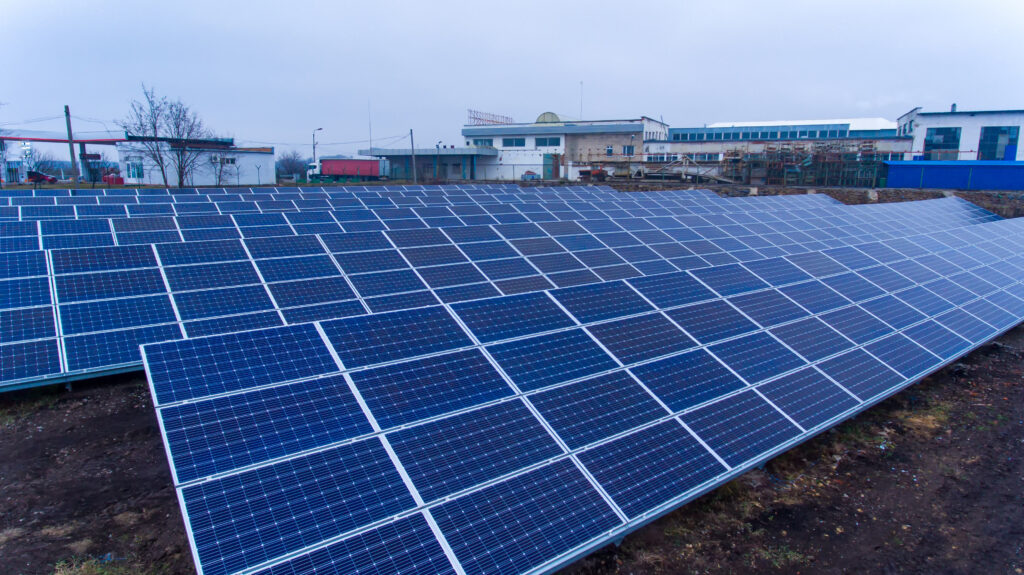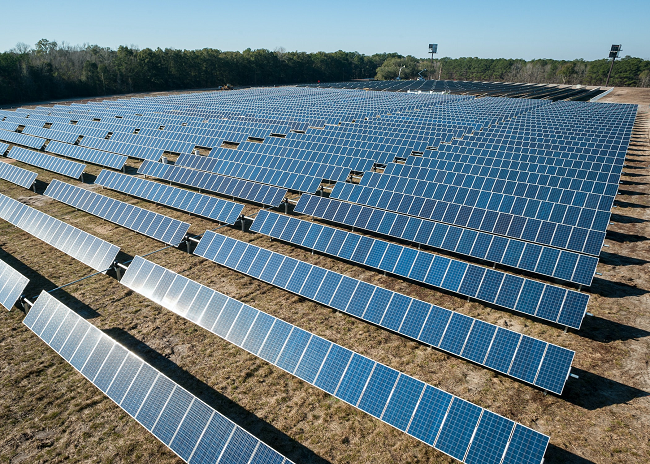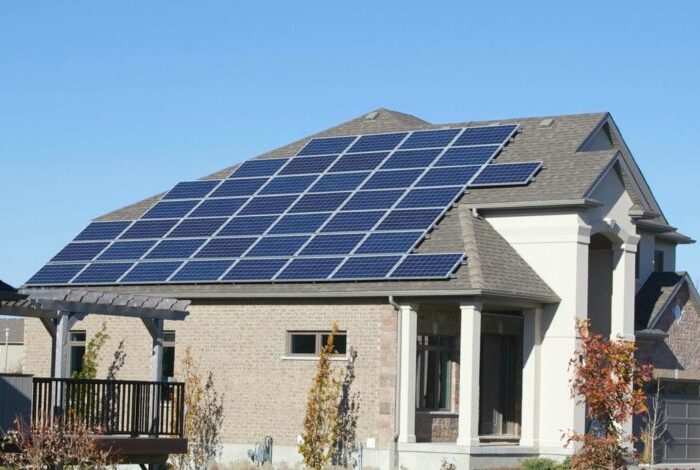
Learning Solar PV System during training might not be as straightforward as they appear while standing, fixed on a roof, or installed on the ground. Even though it seems like basic electricity-generating modules, the process of creating electrical energy involves various theories that span several different scientific fields.
Solar PV Training Course:
Learn Essential Theory, Plannng and Design of Solar PV Systems with Calculations
Photovoltaics is a solar energy technology that converts solar radiation into electricity. Photovoltaic (PV) systems use silicon wafers that are sensitive to sunlight and produce a small direct current when exposed to Sun light. When these PV cells, also known as solar cells, are combined into larger arrangements called modules, they produce an appreciable amount of electrical power with no moving parts, noise, or emissions. A photovoltaic (PV) system is an electrical system consisting of a PV Module array and may also consist of Inverter(s) or / Charge Controllers, Energy Storage Systems and Distribution Boxes/ Disconnects. These components can be arranged in many ways to design PV systems for different situations, but the most common configuration is a utility-connected system, which is found on commercial and residential buildings.
Understanding as well as designing including installation of a Solar PV systems in a professional way would require learning number of topics and modules. If you are looking to learn this part of the renewable world, you may like to go through and learn all of the following topics in order to have firm grip prior to start working professionally in this field:
1) Solar Radiation, Energy and Earth Rotation
It is essential to have a solid understanding of both Solar Radiation and Energy as well as Earth rotation because Sun Energy is the important element in this study. The capacity of a solar cell and module to generate electricity depends on how much solar radiation reaches the Earth’s outer atmosphere and how it gets to the surface. Calculations needed to account for the quantity of electrical energy produced by a certain solar cell or module must consider the factors that affect and the circumstances under which Sun Energy is transformed. Different topics required to be learned may include Extra-Terrestrial/Terrestrial Solar Radiation, Global/Direct/Diffuse/Albedo Radiation, Air Mass, Peak Sun Value and Hours, Solar Irradiance and Irradiation, Solar Radiation Data and Maps, Measuring Instruments, Earth Orbit and Rotation, Solar Time, Sun Path and Charts, Solar Window, Tilt and Azimuth Angles, Magnetic Declination and others.
2) Photovoltaics Cell, Modules and Arrays
The following stage is to fully understand how solar cells and modules function. Learning this technology is crucial for understanding how cells are made from silicon wafers and what causes the phenomena of electricity generation. Moving forward in life without understanding how various solar cell kinds are made and how they differ from one another may limit our ability to distinguish between and analyze numerous such technologies in real life. Hence, it is important to understand what is conductor, semi-conductor and insulator along with Atom Bang Gap, process of Doping, Photovoltaic Effect, p-n Junction and basic structure of a PV cell. Once basic understanding of structure of a PV cell is known, learning behavior of PV cell is important. Understanding Current-Voltage (IV) relationships, maximum power point, operating point, response to different solar irradiance level, response to temperature and other conditions is mandatory to fully grasp the working of a solar cell or module. How behavior of the solar module changes when connected in series or parallel, is one of the key concepts which must be understood too. In addition to above, knowing international standards related to pv modules may be an important part of learning package.
3)Charge Controllers and Inverters
The heart of the system, which regulates the operating restrictions and performance boundaries, is composed of Charge Controllers and Inverters. These devices handle either battery charging or the conversion of DC into AC. It is necessary to have a fundamental understanding of the types, constraints, and selection criteria of such devices before learning about solar PV systems. Voltage and current limitations, two essential functionalities of these devices, must be taken into consideration throughout the design phase. Furthermore, improved device selection is influenced by the quality of the power, the different kinds of power switching devices, and internal control functions.
4) Batteries
These days, energy storage is a crucial and significant demand. Therefore, it is highly advised to comprehend the functions, types, and selection of batteries. The total effectiveness and purpose of the solar pv systems may be completely compromised by a badly chosen battery. The standard need during the design stage of the solar PV system is to choose type and the battery sizing. How crucial it is to master this subject is clear from the fact that the predicted global demand for primary and secondary batteries is expected to expand by 8.1% yearly to $156 billion in 2024.
5) Customer Requirements, System Selection, Economics and Sales – System Design Stage I
The foundation for defining, developing, and installing PV systems starts from precise assessment of the customer’s expectations or requirements. In order to build and plan PV projects, it is necessary to comprehend the customer’s requirements from financial and an energy standpoint. Businesses and individuals providing PV installation services must understand the client’s needs and, based on the site’s circumstances, clearly describe the possibilities, their trade-offs, and prices. They must also explain the functions, maintenance and operating principles for different types of PV systems. The solar professional must also estimate their performance relative to the customer’s electrical loads for a net-metered system and convey how the system design will work with changing utility rate schedules and other incentives for producing energy and power. Understanding System Specifications, Cost Estimation, Pay Back Period, Internal Rate of Return (IRR), Return on Investment (ROI) and Levelized Cost of Energy (LCOE) are one of the concepts which must be known to a solar pv professional.
6) Site Survey and Planning – System Design Stage II
A site visit is necessary to start planning a Solar PV System and to be able to provide a quote. This makes it possible to evaluate the fundamental PV system requirements. Site surveys are performed to gather data regarding the circumstances and problems unique to the area that will be impacted by a proposed PV installation. One of the most important is to establish whether the building is suitable for installing a PV system. Another major aspect of the site survey is to analyze the effect of shading due to near about objects (trees, poles, building) on the solar panels. There are numerous other factors which must be catered during site survey, therefore, professional learning is must to comprehend this subject including how to use different tools in aid of the survey.
7) Array Mounting and Mechanical Design – System Design Stage III
The Array Mounting Method is a crucial element of the system design. When designing and integrating the PV system, the mounting method for the array, the mechanical components, and their integration with the system must all be carefully considered. The mechanical design may be impacted by a number of variables, such as the state of the structure or structural support, the soil (earth), the intended electrical configuration, the properties of the PV modules, accessibility, and adherence to local bylaws, such as the fire code. Prior to designing the system, a thorough grasp of the mechanical design possibilities is necessary.
8) System Selection, Sizing and Calculations – System Design Stage IV
Solar PV System sizing includes the selection and determination of required size of the Solar PV System and other components of the System such as Inverter, Battery, etc. The sizing of PV systems may be based on multiple factors, depending on the type of system and its functional requirements. Different principles apply to the sizing of utility interactive and stand-alone PV systems. Since sizing also estimates energy production, it also helps determine the economic value of a PV system relative to competing power supply options. One of the major aspects, in this regard, is to fully understand and analyze the user load requirements. Whether, it shall be centralized or decentralized system in terms of control (inverter), user requirements, availability of system components in the market and economics all play their role to the final selection of system concept and sizing.
9) Electrical Design, Components and NEC – System Design Stage V
Solar PV System electrical design and selection of components is carried out in a similar way as other electrical circuits incorporating cables, protection and grounding. However, PV Systems may be required to adhere to additional requirements as stated in the National Electric Code (NEC 690), especially for the country of United States (subject to the local State By Laws). It can be quite difficult to build an electrical system for a PV system, and even a little ignorance can result in a design that is not only in violation of the law but also has a significant risk of endangering the consumer. In an electrical circuit like PV array and Inverter, establishing voltage and current limits is one of the most important tasks. Based upon the DC/AC voltage and current boundaries defined, a proper selection of the components can then be made. Establishing voltage and current parameters including proper grounding of the system lead to the final size of the components (conductors, disconnects) in various parts or locations of the PV system. Requirements like Rapid Shutdown, Arc-Fault Protection, Over-Current Protection and Wiring Methods are additional subjects which should be included during design stage, especially for a residential building.
10) Utility Interconnection, Energy Storages and Standalone Wiring
Last but not least, solar pv Systems most of the times are interconnected with the utility or other sources of power i.e. wind, stand-by generators, batteries, etc. Whenever, more than one energy (generating) sources are connected with each other, concerns arises in respect of safety. This requires proper planning, understanding of local bylaws in regard to the grid requirements are essential part of the design stage. Role pf permits, inspections and approvals take center stage during planning and must be prepared at initial stages accordingly. In this regard, understanding of Interconnection Codes such as IEEE 1547, NEC 705, etc. is mandatory.
Learn Essential Theory, Planning and Design of Solar PV Systems with Calculations
Author:
Asif Khokher is seasoned professional having 24 years of international and diversified experience in the field of Control Systems, SCADA and Solar PV for Power, Oil & Gas, utility and other industries serving with International Consultants, Contractors and Sub-contractors/Suppliers/System Integrator. He is currently based in Pakistan, and works as Consultant/Auditor/Inspector and Owner’s Engineer and can be reached at asif.khokher@innovasyses.com
His educational background is B.Sc. Engineering (Electrical), MBA and North American Board Certified Energy Practitioner (NABCEP – PV Installation Professional) beside Project Management Professional (PMP) and Certified Automation Professional (ISA-CAP).

